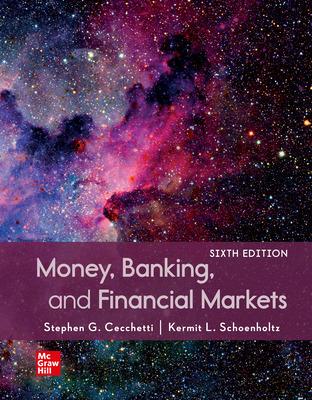
FINA300 In-class assignment This is a one-day test of an "inverted" classroom approach. But don't worry, as long as you have some indication of progress, you'll be given full credit for this assignment. You can work on this assignment together, and I would be OK if the entire class worked on this together. So if you are brave enough to step up to the whiteboard and/or main computer so that everybody else can see your work, that would be awesome. I'll be around to answer clarifying questions-but I will not solve the problem for you. Here's the problem itself: There is an asset class that label GOOD. Its future rate of return is the result of adding two dice together and then adding 2 more to obtain a percent. For example, "snake eyes" or both dice landing on 1, results in 1 + 1 + 2-4%. "Box cars" or both dice landing on sixes, results in 6 + 6 + 2 = 14%. The second asset class labeled BAD has future returns of rolling two more dice and subtracting 2 (rather than adding 2 for the GOOD asset class). You have $10,000 in invest, and the risk-free rate of return is 3%. Here's whatI would like to see in excel: .A chart with risky portfolio risk as the x-axis and portfolio expected return as the y-axis. This chart should have the opportunity set/envelop/bullet .Values for the weights for the optimal risky portfolio P as it is called in the book. The weights of all the assets for an investor with a risk aversion index of A 4. You might want to use Excel's solver to find P. If you have not used it before and would like to try it, I'm here to help. Or you could try Excel's GoalSeek instead, or just try many different portfolios until you get close enough. Since the mechanics of margins gets complicated for portfolios, assume that the most you would be allowed to short any one asset is $100,000. Is this relevant? I'm not saying. Bonus: What would be different if we used the same dice roll to determine the returns of both assets? I'll create a dropbox folder for Excel files, due Monday night. Again, you are allowed to work in groups, but everybody must submit their own file, even if it's just a copy of joint work. Why? It's easier to grade that way- everybody who submits something will get a grade. FINA300 In-class assignment This is a one-day test of an "inverted" classroom approach. But don't worry, as long as you have some indication of progress, you'll be given full credit for this assignment. You can work on this assignment together, and I would be OK if the entire class worked on this together. So if you are brave enough to step up to the whiteboard and/or main computer so that everybody else can see your work, that would be awesome. I'll be around to answer clarifying questions-but I will not solve the problem for you. Here's the problem itself: There is an asset class that label GOOD. Its future rate of return is the result of adding two dice together and then adding 2 more to obtain a percent. For example, "snake eyes" or both dice landing on 1, results in 1 + 1 + 2-4%. "Box cars" or both dice landing on sixes, results in 6 + 6 + 2 = 14%. The second asset class labeled BAD has future returns of rolling two more dice and subtracting 2 (rather than adding 2 for the GOOD asset class). You have $10,000 in invest, and the risk-free rate of return is 3%. Here's whatI would like to see in excel: .A chart with risky portfolio risk as the x-axis and portfolio expected return as the y-axis. This chart should have the opportunity set/envelop/bullet .Values for the weights for the optimal risky portfolio P as it is called in the book. The weights of all the assets for an investor with a risk aversion index of A 4. You might want to use Excel's solver to find P. If you have not used it before and would like to try it, I'm here to help. Or you could try Excel's GoalSeek instead, or just try many different portfolios until you get close enough. Since the mechanics of margins gets complicated for portfolios, assume that the most you would be allowed to short any one asset is $100,000. Is this relevant? I'm not saying. Bonus: What would be different if we used the same dice roll to determine the returns of both assets? I'll create a dropbox folder for Excel files, due Monday night. Again, you are allowed to work in groups, but everybody must submit their own file, even if it's just a copy of joint work. Why? It's easier to grade that way- everybody who submits something will get a grade







